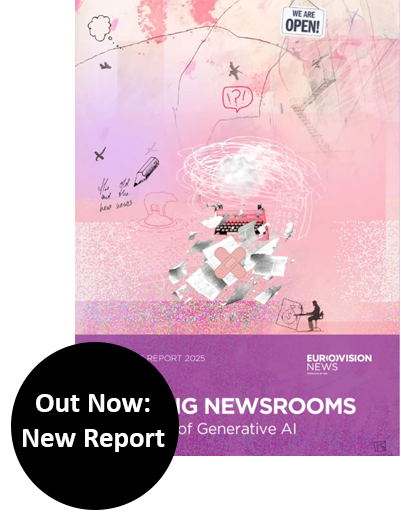Digital transformation has put the business models of news organizations under pressure. More than ever media outlets want and need to make their customers pay for journalism and other products. This is a unique chance to build closer connections to audiences and learn about their needs. But when are they willing to pay? For Medieninsider, I talked to Florian Bauer, a professor for behavioral pricing at TU Munich’s TUM School of Management and runs the pricing consultancy Vocatus, about opportunities, strategies, common assumptions and the mistakes publishers make.
Medieninsider: Mr. Bauer, there is much debate in the media industry about whether and what customers are willing to pay for journalism. You say there is no such thing as willingness to pay. How would you frame it?
Florian Bauer: The term willingness to pay is psychologically completely misleading. Microeconomic theory assumes that people have a maximum price in mind that they are willing to pay. This would then be predefined, and companies could only react to it. But people don’t operate like that, most of them don’t know in advance what they would pay as a maximum. They have a less rational approach to prices and decide much more spontaneously, but quite predictably. That’s why we talk about price acceptance.
That sounds like an opportunity. If I want to sell something, how do I go about the pricing then?
Price acceptance is like a muscle that you can train. You constantly increase the weight you are working with. What you shouldn’t do: Lift the same weight for five years and then put on a lot more.
Welcome to the media industry. First the content was available digitally for free, now customers are suddenly asked to pay.
The industry’s big mistake was to plan with a reach model based solely on digital advertising revenues and to give content away. Today we have to live with this mistake. It’s about evolving the model. This is not easy in an industry that has not dealt with pricing and strategic price management for a long time.
But in the last 20 years, it has dealt a lot with price increases…
Exactly. Let’s look at an existing product, the newspaper subscription or the retail price. For many years, it was common to make price increases on the basis of gut instinct. The publisher and the publishing director sat down, analysed the price of paper and inflation, looked at what the competitors were doing and then decided. But what their costs are should not matter at all for pricing, what the competitor is doing shouldn’t either. That is an important paradigm shift.
“We advise against proactively justifying price increases, even for subscription prices.”
Many people have not yet made this shift, don’t you think?
I agree. But the need to rethink approaches goes even further: we advise against proactively justifying price increases, even for subscription prices. Very often the editor-in-chief writes an article to justify the price increase. He justifies why, unfortunately, the subscription now has to be made more expensive, for example, because delivery costs were rising due to the minimum wage. But an article like this tends to make readers aware of the price in the first place. Suddenly, they might find the product expensive. Or they are disappointed with their newspaper: ‘What do you mean, they haven’t paid minimum wage yet?” It is naïve to believe that proactive justification will lead to greater acceptance. Of course, you have to be able to answer questions if the subscriber asks. But very few do.
The British Guardian, for example, has had very good experiences explaining to its online readers in detail why good journalism costs money. In fact, they make users feel guilty about freeriding, because you can read the Guardian online without paying. With this strategy, the Guardian has even managed its turnaround.
If you have more fans than subscribers, this strategy may work. You can see that in Germany with the taz. You then advertise for members, not subscribers in the classical sense. Most of the time, however, customers don’t want to be members, they just want to be subscribers. In addition, the Guardian’s approach to online content must be evaluated differently: here it is often a question of introducing a price at all, not just increasing an existing price. This is a completely different starting point in terms of decision psychology.
“Nothing is worse than giving people something they don’t want.”
Most media offer their content in different subscription packages.
That is why you have to look at the whole product portfolio. Customers in the media market are socialized differently. On the one hand, there are the readers who want a finite product. The difference between an e-paper, which reproduces the newspaper completely electronically, and the web offer is much greater than that between the e-paper and the printed newspaper. Those who want the e-paper often don’t want an app that is constantly updating. Others want a continuous product that is fresh everytime they visit. The risk of cannibalization between these two groups is relatively low. Publishers have to take these different habits into account in product development, because serving and developing habits in a way that matches customer needs is the holy grail in the reader market.
How do you deal wisely with the different groups?
Publishers have a tendency to put everything they have on the counter. In doing so, they mix products and offers into an enormous number of options. That is a mistake. In fact, it’s the other way around: the more I put out there, the greater the likelihood that the decision to buy will be postponed because the variety confuses people or at least makes them feel uncertain. Some products are not even relevant for me as a customer. That’s why you have to think intensively about what users want and how you can bundle products accordingly. For example, does it make sense to give customers online access in addition to a print subscription? Nothing is worse than giving people something they don’t want.
To stick with the training analogy: What is the entry weight for web customers? In the industry, the monthly prices of Netflix and Spotify are often given as a benchmark, about roughly 10 Euros a month.
It always depends on how you enter and what associations your product arouses. A price of 19.90 euros triggers other reference prices than one of 14.90 euros. This is called the assimilation-contrast effect: you see a price and relate it to something. 14.90 euros can then be a very, very expensive Netflix subscription. In contrast, 19.90 may be perceived as a cheap way to get the expensive print content. To exaggerate a bit: The perception and evaluation of prices is not linear and certainly not rational. Understanding this is enormously important. We actively use this in “behavioural pricing”. As a provider, you can influence the reference prices that customers consult through price communication. That is why pricing is more than just defining price points. The mental compartment you address with your offers is quite decisive.
But younger readers don’t even know what a print subscription costs. They think of their Spotify subscription.
The decision architecture that you offer customers as a provider very much determines the mental comparison processes. But you have to understand that this is the case. The task is not solved by putting a product on the table, adding a price and then assuming that the customer will find the right one. People don’t want to decide, they want their decision laid out for them. If you don’t use these degrees of freedom as a supplier, customers may use unfavorable references.
What do you think of discount campaigns, entry-level discounts, for example?
Basically, good discounts are not price reductions, but rewards for better customer behavior. Far too often, prices are simply reduced because people see this as a panacea. But one has to be aware of the price-psychological effect of different discounts on the one hand — should it be a price reduction or a bonus — and on the other hand decide which discount strategy one wants to pursue before the concrete goal of the campaign — does one primarily want to trigger the decision or differentiate prices. This happens too little. Too often discount promotions are just examples of muscle destruction. If you constantly read: ’20 per cent off everything!’, then the muscle degenerates. You then read: ‘Dear customer, you regularly pay 20 per cent too much!’ Unjustified discounts always trigger doubts about the quality of the product. It is interesting to observe this in the furniture industry. It seems to be all about discounts. At least that’s what suppliers believe, forgetting that Ikea, the most successful furniture retailer, doesn’t give any discounts.
What do you think of dynamic pricing? In the media industry, the New York Times is an example. Customers overseas are offered much lower subscription prices than those in New York City because management calculates that they have to lure an international audience with a different price than the national one.
Price differentiation is the fine art of pricing. Different people or groups have different price acceptance for the same product. But it is very difficult to use this lever without breaking it. Price differentiation has more to do with fairness and habit than with “willingness to pay” in the textbook sense. You have to be used to it in an industry. We are, for example, in the airplane, where we know that the person next to us has probably paid something quite different. It’s similar with hotel prices. With Uber, on the other hand, there was a huge outcry when they experimented with surge pricing, which is based on supply and demand. Price differentiation is an enormous lever and is becoming more and more important for publishers, but successful price differentiation is more than the experimental introduction of different prices and needs a long-term concept.
Let’s take a look at the advertising side. Have the advertising departments done their homework?
Not really. The problem is less the pricing strategy than the sales approach and price enforcement. In Germany, ads are still often sold by the millimetre and colour. Advertisers are not offered solutions. A needs analysis rarely takes place. What is offered is what the consultant likes to sell and not strategically bundled what the client really needs. And in the end, one meets on the one dimension that both understand — that is then the discount. One sometimes gets the impression that the change from the old “ad acceptance”, where salespeople just had to answer the phone and write down orders, has not really been made yet.
“In subscription management, the first customer transaction is only the beginning, not the end of the sales process.”
Why has the industry been asleep for so long?
The newspaper industry has been a very stable industry. The product has hardly changed for many hundreds of years. And suddenly everything revolves around products, channels, competitors. The product portfolio has exploded on the reader and ad side, but the customer has often not been taken along. Both customer sides understand the product worlds too little. Many readers still think that the same thing is on the website and in the newspaper. Many do not know what an “e-paper” is. If customers don’t understand the product worlds, they don’t buy. Publishers had to and still have to learn to explain their products, to bring them to the reader. And above all, they still have to learn to develop products in a customer-centric way. What is a good product is not determined by the editors, but ultimately by the customer.
In the case of newspaper subscriptions, people have been relying for decades on the fact that readers don’t even notice that they are being charged regular amounts. With digital subscriptions, the cancellation rate is considerable, many publishers moan about churn.
Here, too, there is a paradigm shift from classic subscription sales to modern subscription management, as we know it from app providers like Netflix and Spotify. In subscription management, companies no longer live predominantly from new acquisition, which was often enough a premium-heavy revolving door acquisition. It’s all about increasing sales with existing customers. That’s what makes Netflix tick, too, because unit growth in certain markets is finite. Portfolios need to be built to increase monthly recurring average revenue from the customer. That’s how you can grow sustainably. In subscription management, the first customer transaction is only the beginning, not the end of the sales process.
What does that mean in concrete terms?
You have to think in terms of individual sales steps. At the paywall, I don’t have to try to sell an annual print subscription or offer the entire product portfolio. At these decision points, I have to offer what the customer needs most. Once the customer has bought the first product, there must be a defined upselling strategy. Of course, only after it has been ensured that a stable usage habit has been formed. You have to understand the respective decision-making situation and therefore offer something different at the paywall than in the shop, for example. This also includes first asking what the customer wants. After all, the first thing the salesperson asks in the shop is: ‘What do you want? What do you already have from us? I make myself much more attractive when I have understood a bit about the customer. The shop should not be a shop window, but a decision support machine. That would be a huge step. If you then also manage to speak the customer’s language …
There are fashions in the payment models for digital content. What is the latest trend?
Today, almost all publishers differentiate their web content, so some pieces are not available for free at all. The freemium model has proven itself so many times. But it also leads to people coming to terms with ‘plus’, they don’t even hit the paywall anymore. You could say that they no longer see this content because at some point they decided they didn’t want to pay. But it is important to note that you often come up against this decision point and cannot avoid it per se. For this reason, some publishers are currently discussing metered models again. This is how publishers react to habits that have developed on the customer side. What is successful today as a paywall model does not have to be so tomorrow.
“A subscription should not be a prison.”
Customers often want to be able to buy individual articles. As we know, this is not profitable for the publishers.
But perhaps a day pass or generally non-subscription-based offer formats are sometimes the right thing to do. After all, newspapers have not abolished single-item sales at newsstands, even though they bring in much less than subscriptions. In the digital business, however, many publishers say you can only become a subscriber. Of course, the day pass alone is not a revenue generator. But maybe that’s not its function in the portfolio. I believe that non-subscription-based offer formats are often not yet used properly. In subscription management, the products of a portfolio must not be evaluated solely according to their inherent revenue potential, but one must also consider their role in establishing and expanding customer relationships. I think there will be much more sophisticated acquisition approaches here in the future.
You want to say that the relationship starts before marriage. What about divorce: Should you make it simple or complicated?
A subscription should not be a prison — that was the “old thinking”: “win a subscription with a premium, lock it up, throw away the key and never touch it again”. If someone doesn’t want to anymore, they should be able to leave immediately. Otherwise, I only make short-term profits, which I pay for with the fact that people won’t be so quick to take out subscriptions in future.
But some customers are only after the incentives.
When subscriptions are paired with high incentives, it’s an expensive and often deadly model and you educate yourself customers to be gift hunters. The reason for taking out a subscription then immediately becomes the next reason for cancelling. You don’t grow sustainably by always shoveling in new people at a high price, but by developing customer relationships. For example, if you have a Spotify subscription, you usually invest a lot of time in your playlist, and you don’t want to lose that. If customers invest in the relationship themselves, they never want to give it away again. Selling is not only about the first and last mile, but also about the extra mile: Only when the customers have developed habits have I won them.
Florian Bauer is professor for behavioral pricing at TUM School of Management and director at the German pricing consultancy Vocatus.



